Writing & Drawing as Conversation with Self
Insider #148 with similarities that allow us to draw as we write, and differences that demand their separate practices.
Dear reader,
The SneakyArt (Insider) Post is the long-form post that formerly went out only to paid subscribers of this publication. As of this year, however, no more gatekeeping good ideas. The paywalls are down and all posts are shared with all readers. Thank you SneakyArt Insiders, for making this possible.
This week, I look at how words and lines, writing and drawing, have coexisted in my life. For a while, they were locked in existential combat. But today they are at peace. Today’s post is for the writers curious to draw, and the artists who wonder about words.
A quick note: By helping me break free from the chains of social media, paid subscriptions have allowed me to do my best writing. In place of a constantly anxious posting cycle, I have the opportunity to think deeply, and write, write, and re-write, to craft the words that help me better understand myself. If the words are good enough, they might help you better understand yourself too.
If you appreciate the work I do, consider becoming a SneakyArt Insider to support the mission of SneakyArt - the good lines and the good words.
The Same Thing
If you know how to write by hand, you already know how to draw, because writing and drawing are the same thing.
We use lines to form shapes, and combine shapes to create symbols. The symbols come together to give meaning to things. Letters form words that, strung in a line, become sentences. Meaning is derived from how words relate to other words, and how one sentence sits next to another.
When drawing, we extract from a similar vocabulary to put together lines and shapes in interesting combinations. Drawings make sense when lines relate to other lines, and shapes build upon other shapes.
Understanding this similarity is key to allowing yourself to draw. Your style is nothing more than your lines and shapes drawn according to your taste and curiosity in your handwriting. While it is widely understood that every writer should strive to write like themselves - and we spend years trying to undo the subconscious influences of other writers - a lot of people still believe that their art should look like that of other people. We spend years, sometimes decades, running away from our lines, our shapes, and our style.
The way an old journal can show you the ideas, metaphors, and influences, of that time of your life, so too can an old sketchbook exhibit your drawing vocabulary, ideas, and sense of composition.
Dear reader, have you kept a sketchbook as journal?
Very Different Things
Writing resides in the world of words and sentences. And words are inherently political. The French philosopher Derrida said, “Every statement is a lie”, to mean that words mean different things to different people, so no sentence means exactly what the listener/reader thinks it to be.
Derrida also spoke about words having two separate meanings - synchronic and diachronic. Consider the word ‘justice’. Its synchronic meaning is how it is understood today - free and fair trials, individual human rights, innocent until proven guilty, etc. The diachronic meaning of the word is the long train of meanings it has held over time for different people. Heavier words have more baggage, lighter words have less but often subtle baggage.
In essence, every statement is a lie and words are really bad at meaning things.
But drawing is nothing like that. It is articulation of thought but outside of words. The process of drawing - from sight and perception to representation - can play itself out without a single word getting in the way.
Art is more accessible because art can communicate outside of language. It is a shortcut to thoughts and experiences that are sometimes gatekept behind education, erudition, and other heavy words.
In our modern text-driven culture, drawings and art occupy a special place. They help you temporarily disconnect from the business of interpreting the politics of language. They take you outside the boundaries of your own vocabulary.
Early in my SneakyArt practice, when I began to really enjoy this business of drawing my world, I thought it would be the end of my relationship with words. When I drew a lot, the writing suffered. When I wrote a lot, the drawing did. It was as if the two were locked in an existential struggle. Brash, young drawing had arrived on the scene and brusquely demanded that words explain their relevance.
Publishing this newsletter every week has helped me better understand their separate domains. A border lies between them now, and no-man’s land too. Barb-wire is strung across some sections. But mostly it has become a peaceful crossing from one realm to the other. Many ideas go back and forth. Some deserve words, some want the lines.
Do the two practices live together in your life too, dear reader?
Thank you for your time and attention. I am so glad to have a space in your inbox.


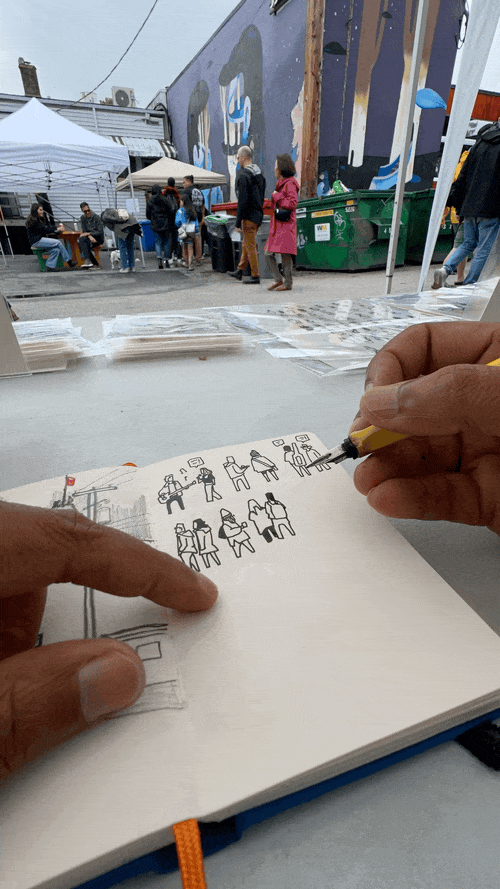

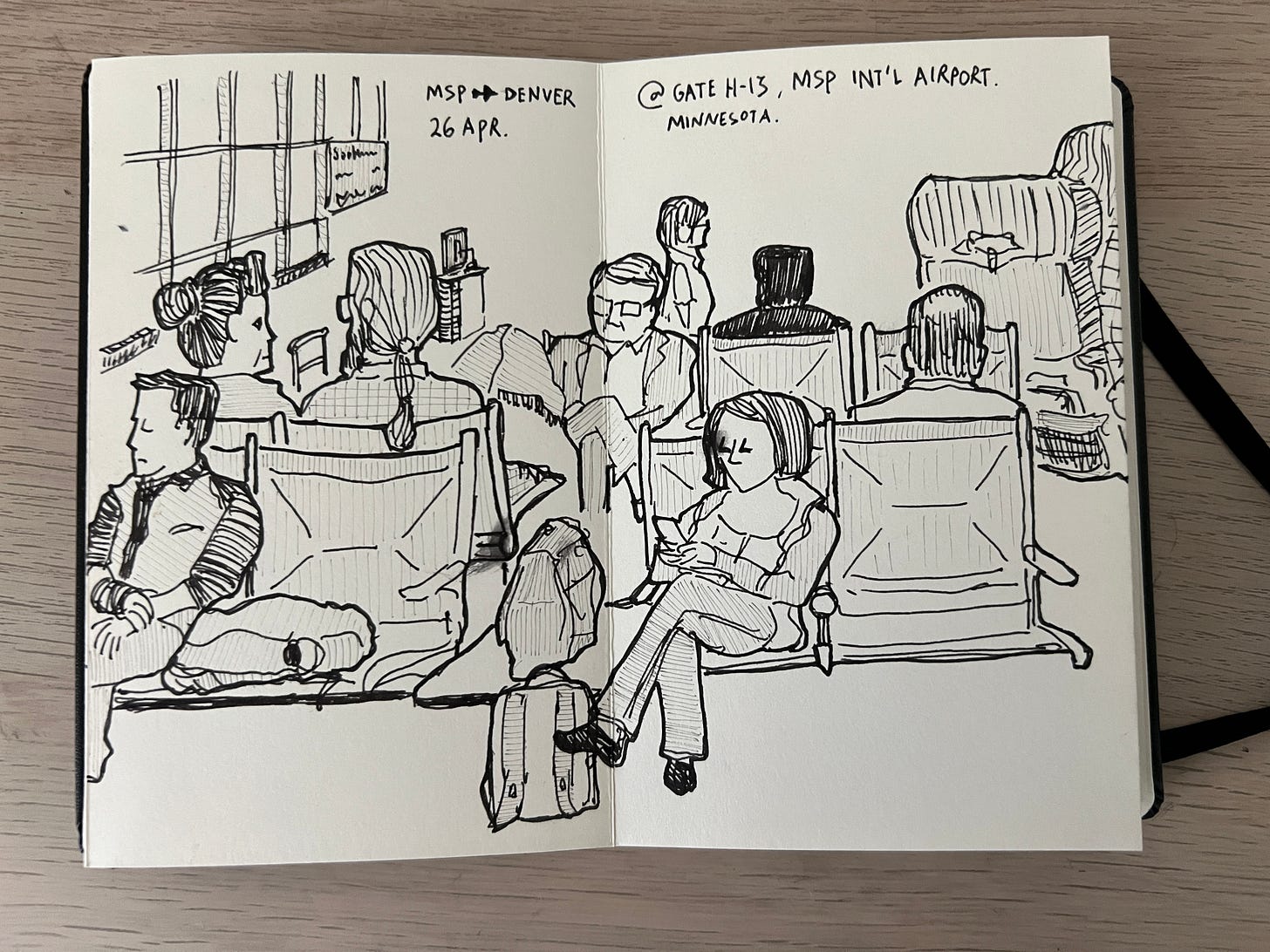
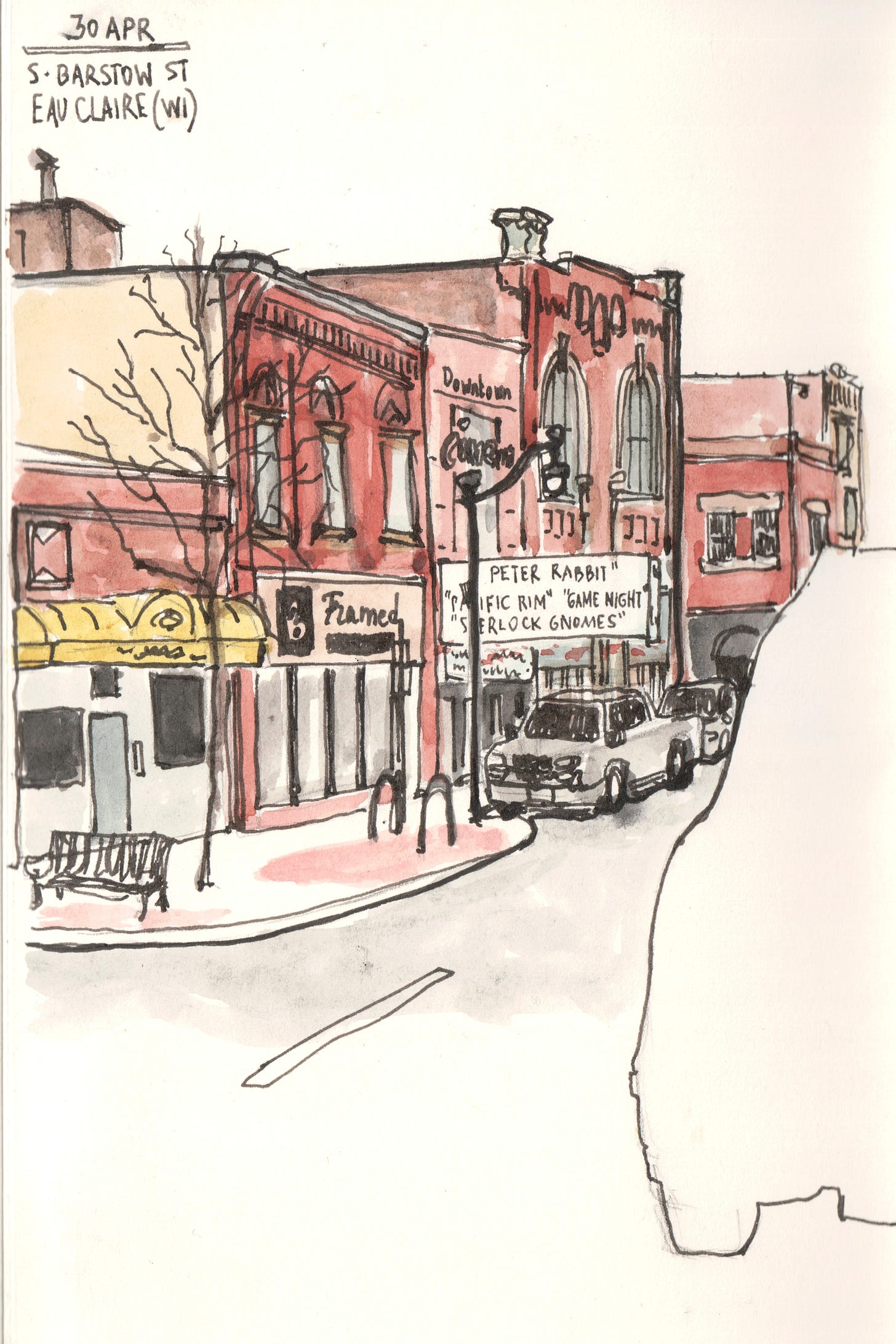

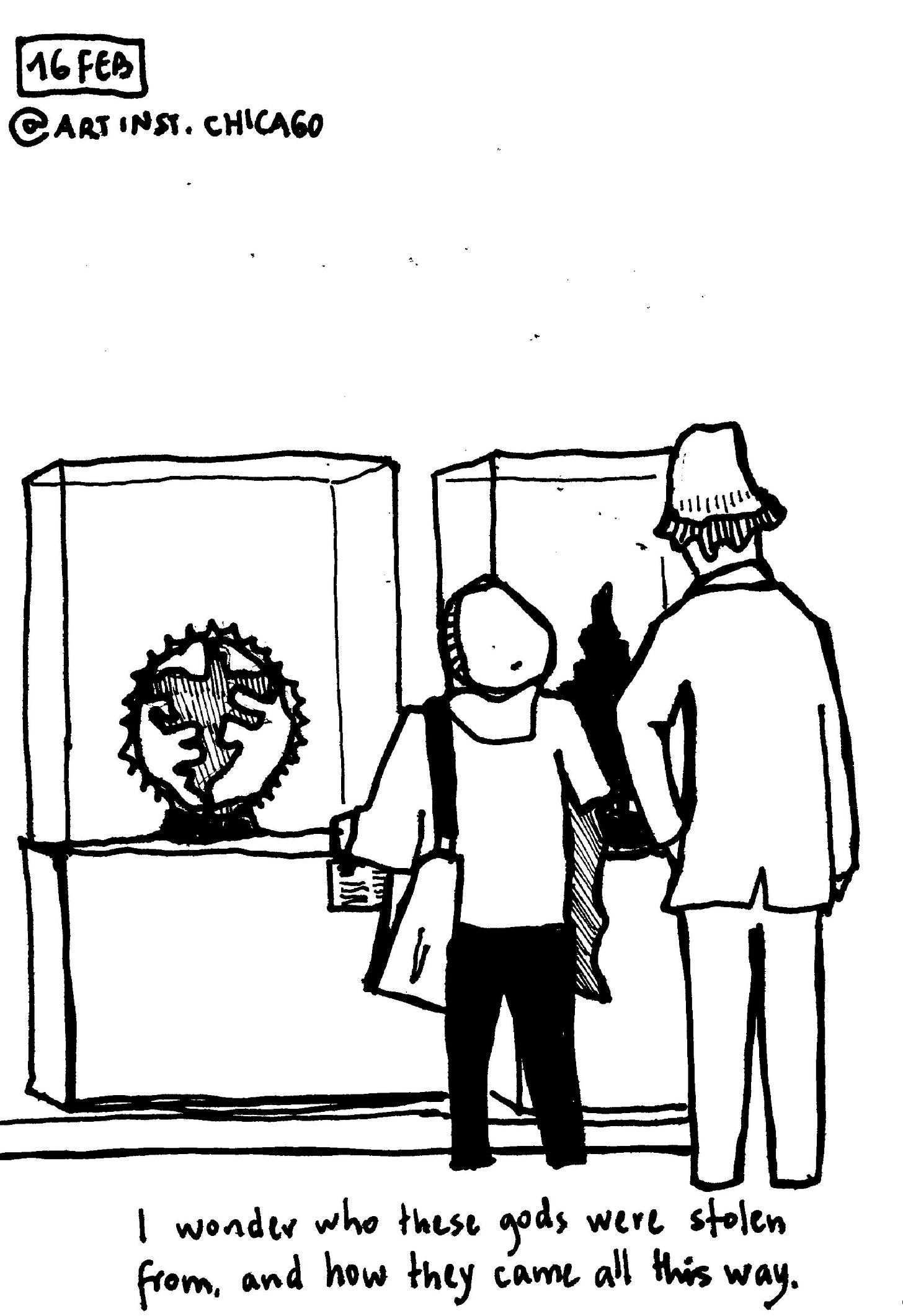
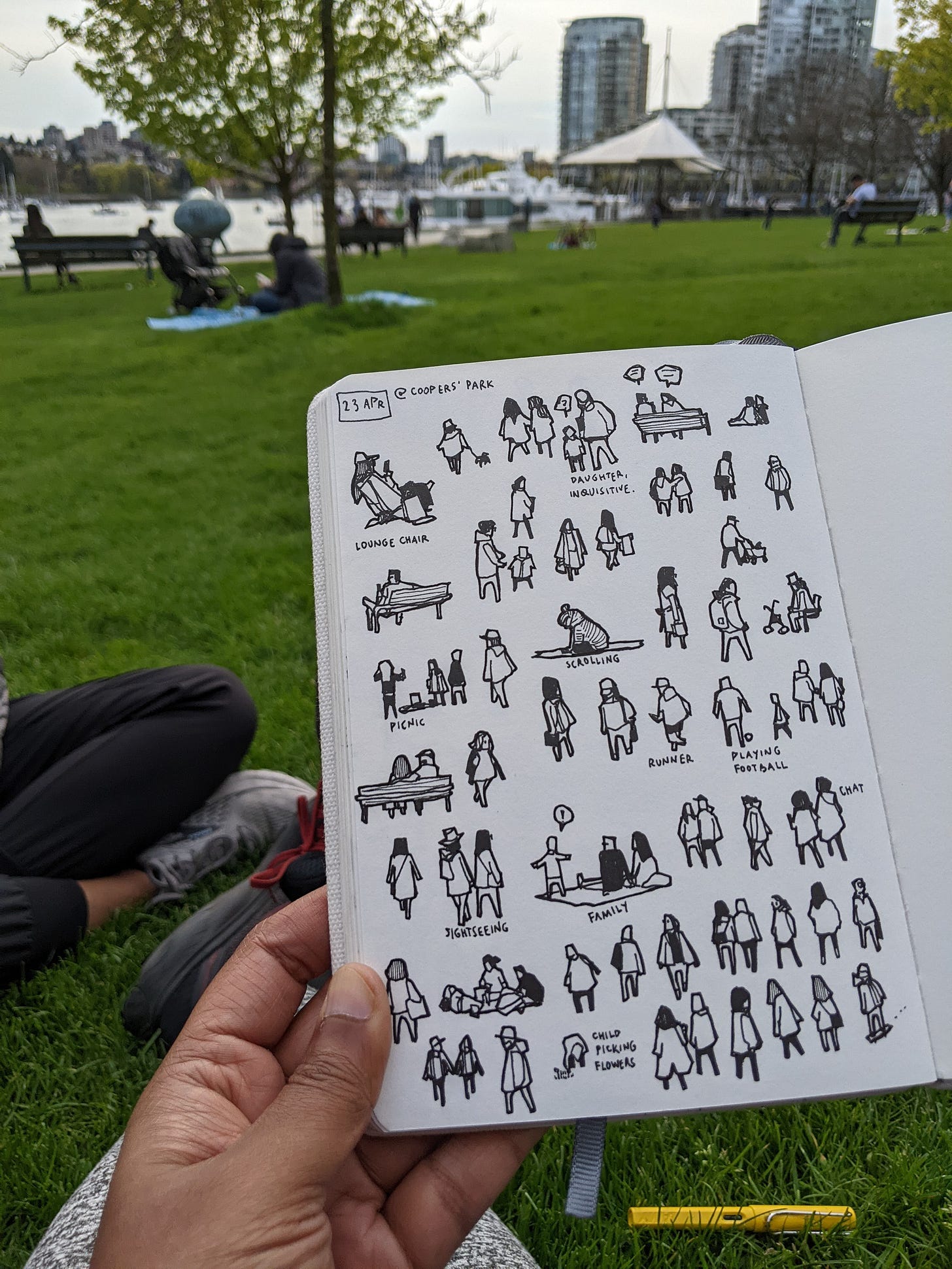

I mainly draw...but my mind is trying to lure me into writing things...even if I have this strong feeling that my writing is crap ...will I cross the line, will I dare writing something?
I really think the 2 are linked...I just need to find what's binding them😁
I loved reading this particularly because both of my kids love to draw (and also write stories), but my younger kid, who finds your work inspiring, also started inventing an hieroglyphic-type language to go along with a new style of drawing they came up with for themselves earlier this year. I guess it's what you're talking about in action, in a way!
Words, to me, also have shape and weight--heft. Their meanings aren't two-dimensional. All languages are multi-dimensional, it's just that most of them get smothered under centuries of standardization.
I was recently trying to think about how to describe my personal feelings of professional jealousy. As in, what the physical experience is. What keeps coming up is a triangle of indirect sunlight cast on a wall through a window. How to explain that?! Who knows! But it feels accurate to me.